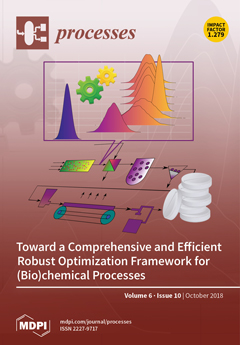The aim of this study was to microencapsulate an optimized extract of purple cactus pear fruit (
Opuntia ficus indica), rich in phenolic compounds (PC), betacyanins (BC), and betaxanthins (BX), with antioxidant capacity (AC), by two methodologies: combined water-in-oil-in-water double emulsions-spray drying
[...] Read more.
The aim of this study was to microencapsulate an optimized extract of purple cactus pear fruit (
Opuntia ficus indica), rich in phenolic compounds (PC), betacyanins (BC), and betaxanthins (BX), with antioxidant capacity (AC), by two methodologies: combined water-in-oil-in-water double emulsions-spray drying (W/O/W-SP) and conventional spray drying, studying the effect of spray drying (SP) on PC and AC. Optimal extraction conditions for bioactive compounds were: 52 °C, for 30 min, using aqueous ethanol (40%
w/w) as the solvent, with a 0.85 desirability function, obtaining 17.39 ± 0.11 mg GAE/g
dw (gallic acid equivalents per gram of dry weight) for PC, 0.35 mg BE/g
dw (betanin equivalents per gram of dry weight) for BC, and 0.26 mg IE/g
dw (indicaxanthin equivalents per gram of dry weight) for BX. The best combination of temperatures for conventional SP and W/O/W-SP was 160–80 °C obtaining the highest retention and encapsulation efficiencies for PC. For conventional SP, results were: 107% and 100% PC and AC retention efficiencies (RE-PC and RE-AC), respectively, with 97% of PC encapsulation efficiency (EE-PC), meanwhile for the W/O/W-SP results were: 78% and 103% RE-PC and RE-AC, respectively, with 70% of EE-PC. Microcapsules obtained with W/O/W-SP maintained their structure and integrity and showed a considerable reduction in globule size in the reconstituted W/O/W emulsions due to the spray drying stress. Despite having lower EE-PC than conventional SP, spray dried W/O/W emulsions seem as a promising controlled-delivery vehicle for antioxidant compounds.
Full article





